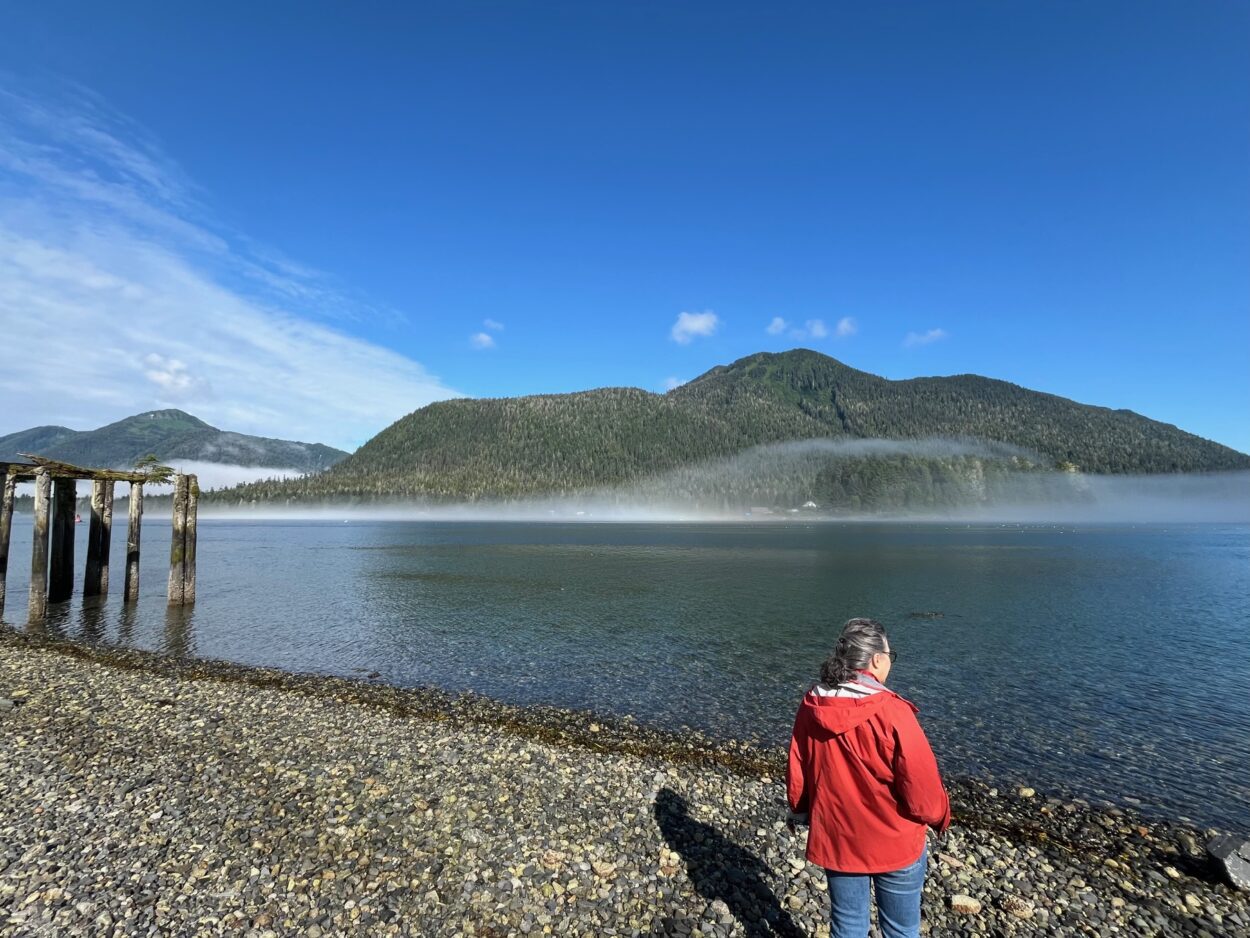
It’s a clear, crisp morning in August, and Pastor Deb Gelerter and I are walking the beach along Petersburg’s Wrangell Narrows, headed towards Mitkof Island’s northernmost point.
I’ve got my photo in my hand, volume turned all the way up, and we’re listening as the voice of Avery Herrman-Sakamoto describes the ripping currents that flow through the Wrangell Narrows, just to our left.
We’re trying out the Petersburg Rainforest Festival’s virtual walking tour. It went live in May, paid for by a grant last year from the Petersburg Community Foundation. The tour follows a 2.6 mile loop, with nine stops along the way. Each location has descriptions of flora and fauna, geology and oceanography – and an original poem.
Gelerter and I hop from rock to rock, avoiding the clusters of mussels that the Herrman-Sakamoto informs us are attached to the rocks by thin tendrils called byssal threads.
Gelerter is a newish arrival to town, but she’s a constant walker and has visited this beach often in the short time she’s been here. We find a couch-sized rock to sit on and settle in, alternating listening to the app, and the sounds of the gulls swirling above us, and the sea lions out in Frederick Sound.
We play the poem for Location #3: Hungry Point. It’s called Seabird.
“The storm will try
with its waves and gales
and brave bluster
to ruffle your feathers,
but you will rise up with the crests
and slip down with the troughs
Unflustered
through the worst of the spitting winds.”
The poems were written and voiced by Petersburg resident Sunny Rice. The walking tour was her idea – she thought it up during the early days of Covid, when she was on sabbatical from her job with the University of Alaska. She was taking lots of science classes, and part of the requirement of the sabbatical was to bring back some of that knowledge to Petersburg. And she was constantly walking the trails and boardwalks and beaches around town.
“The essence to me of being here, is these little things that you see while you’re out for a walk,” she said.
She made a list of all the things in the area she’d want to cover for a naturalist 101 course. And then she started placing the topics along the loop of trails and beaches she’d been walking every day. She said she wanted to make sure that most of the things discussed on the tour would be visible to people.
“I tried to put things that you’re pretty certain to see,” she said. “I was going to do more birds, but then I was like, ‘Well, it might be frustrating if we’d start talking about the dark eyed junco, and there aren’t any juncos.’”
Rice said the combination of science and poetry came from her own interests.
“I view the world first through the poet’s eye and yet, my work, the sort of mission of what I do is to show the world through the scientist’s eye,” she said.
Rice said she hopes the tour helps locals and visitors alike appreciate the natural world and their connection to it.
Gelerter and I leave the beach and the sounds of gulls and sea lions behind, heading up the road. We pass a squirrel, chattering loudly, and get croaked at by ravens. We make our way to a boardwalk that winds over the boggy, acidic muskeg, and sit down at the first bench. Herrman-Sakamoto tells us about the magenta shootingstar flowers and tufts of cotton-grass that dot the muskeg in the spring, and the bog cranberries that feed both migrating geese and resident humans in the fall.
The boardwalk connects to a gravel trail, which winds past the ballfields. We learn the red alder trees lining the trail grow well in poor soil. We head downhill to a little forested area and find lowbush blueberries. We sample them enthusiastically.
And then it’s out of the trees and back on the sidewalks, headed toward main street, where Herrman-Sakamoto urges us to notice the interplay between humans and the natural world.
“…While Petersburg is full of gardeners, they live in a state of constant friendly battle with the Sitka black-tailed deer that seem to wander the streets and sidewalks completely unafraid, sampling flowers and vegetables alike….”











